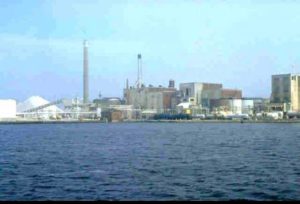EPA Final Rule on Clean Water Act Hazardous Substance Facility Response Plans
 On March 14, EPA finalized the Clean Water Act (CWA) Hazardous Substance Worst Case Discharge Planning Rule requiring facilities with reportable quantities of CWA hazardous substances or threats of discharges to develop response plans and submit them to EPA. A worst-case discharge is the largest foreseeable discharge in adverse weather conditions, including extreme weather conditions due to climate change. These requirements ensure that facilities have planned for and can respond to discharges of hazardous substances that can harm the environment and drinking water sources, and consider environmental justice concerns.
On March 14, EPA finalized the Clean Water Act (CWA) Hazardous Substance Worst Case Discharge Planning Rule requiring facilities with reportable quantities of CWA hazardous substances or threats of discharges to develop response plans and submit them to EPA. A worst-case discharge is the largest foreseeable discharge in adverse weather conditions, including extreme weather conditions due to climate change. These requirements ensure that facilities have planned for and can respond to discharges of hazardous substances that can harm the environment and drinking water sources, and consider environmental justice concerns.
The response plan requirements apply to facilities with a maximum onsite quantity of a CWA hazardous substance based on threshold quantities, located within a half mile radius of navigable water or conveyance to navigable water, and that meet one or more substantial harm criteria, including the ability to impact a public water system. The final rule reduced the threshold for the maximum onsite quantity of a CWA hazardous substance to 1,000 times the Reportable Quantity (RQ), from 10,000 times the RQ in the proposed rule. See CWA Hazardous Substance Facility Response Plan Applicability.
The final rule also includes more explicit requirements for state and local response plan coordination, which can potentially help with water system emergency response planning requirements and spill notifications under the 2018 America’s Water Infrastructure Act (AWIA) Section 2013 and Section 2018. For additional information about drinking water considerations, view ASDWA’s comments on the proposed rule.
Facility response plans are due to EPA within three years of the final rule date and the plans must be recertified every five years. For more information, see the prepublication of the final rule and visit EPA’s website.

